Meeting in Samarkand: Tokayev and von der Leyen, Ideal Partners?
Derya SOYSAL

The EU held a summit with Central Asia in Samarkand. In recent years, Europe has been increasingly turning its attention toward Central Asia. Its relationship with the region is built on the EU-Central Asia Strategy, which has adopted a more pragmatic and coherent approach. This strategy aims not only to achieve realpolitik goals—such as energy diversification and regional security—but also to strengthen engagement in other areas such as transport and resilience. Three years ago, the European Council conducted official visits to Uzbekistan and Kazakhstan in 2022, and its representatives attended the first high-level Central Asia Leaders’ Meeting in Astana, demonstrating the EU’s commitment to deepening ties with these nations.
Two days ago, on April 3, 2025, Kazakh President Kassym-Jomart Tokayev held talks with the President of the European Commission, Ursula von der Leyen, on the sidelines of the EU-Central Asia Summit, according to the Kazakh Presidential Press Service. Kazakhstan is the second-largest economy among the post-Soviet states, after Russia. In 2023, its GDP per capita reached 13,232.8 USD.
The talks focused on the prospects for cooperation between Kazakhstan and the EU in areas such as the economy, digitization, and innovation. Both parties also welcomed the initiation of visa facilitation agreements. President Tokayev emphasized that the Enhanced Partnership and Cooperation Agreement (EPCA) between the EU and Kazakhstan remains the foundation of their multifaceted cooperation. He identified four priority areas for deepening cooperation with Europe: energy; major infrastructure and industrial projects; the expansion of transport and logistics networks; and digital innovation, advanced technologies, and artificial intelligence. For her part, President von der Leyen highlighted the importance of transport and logistics projects, including the Trans-Caspian International Transport Route (TITR), and also welcomed the recent discovery of a significant rare metal deposit in Kazakhstan.
In fact, Kazakhstan has become one of the EU’s key strategic partners in recent years, especially since the outbreak of the Russia-Ukraine war. This war has significantly altered the geopolitical landscape of the region and the world. Europe found itself cut off from major energy sources, such as natural gas previously supplied by Russia. The EU’s long-standing carbon neutrality goal has driven it to seek alternative energy sources—turning to Kazakhstan for its rare earth elements and uranium.
In 2025, Kazakhstan and the European Union will celebrate 34 years of partnership, established since the country’s independence in 1991. The EU is Kazakhstan’s main trading partner, accounting for 40% of its foreign trade. Moreover, the EU has been the leading foreign investor in Kazakhstan, representing half of the FDI inflows in 2018 (EEAS, 2023).
In terms of economic ties, cooperation primarily focuses on investment and trade diversification (Konopelko, 2017).
Kazakhstan’s leadership is moving toward a model of Europeanization, as illustrated by the “Five Institutional Reforms” initiative. According to the European Council, following the adoption of the Versailles Declaration in March 2022, EU member states agreed to rapidly reduce their dependence on Russian energy.
Many scholars agree that the relationship between Central Asia and the EU is primarily driven by shared interests in the energy sector. Even within the context of the ongoing war between Russia and Ukraine, the EU-Kazakhstan partnership remains focused on energy cooperation through the Trans-Caspian International Transport Route (TITR) and the EU’s Global Gateway initiative.
Since the beginning of the war in Ukraine, the EU has repeatedly expressed its desire to strengthen ties in the energy sector. At the 20th EU-Kazakhstan Cooperation Council meeting in October 2022, the EU acknowledged Kazakhstan’s contribution to European energy security and supported the development of renewable energy.
Both Europe and Kazakhstan aim to cooperate not only on energy but also on promoting peace and security in the broader region. Thus, security, stability, and prosperity in Central Asia are also high on the agenda (Kembayev, 2021).
The presence of other major powers such as China and Russia in the region also pushes the EU to accelerate its partnership efforts.
The economic cooperation between Kazakhstan and the EU plays a significant role in the latter’s economy, considering that the EU is both Kazakhstan’s leading trade and investment partner. The Enhanced Partnership and Cooperation Agreement (EPCA) could be a key indicator of economic activity from 2020 to the present.
In addition, the transition to a green economy has become one of the EU’s top priorities since the invasion. A Memorandum of Understanding (MoU) on strategic partnerships in sustainable raw materials, battery value chains, and renewable hydrogen was signed in November 2022 to better manage raw materials. This aims to transform the energy sector through renewable hydrogen and battery value chains (EEAS, 2023). The development of a sustainable market for critical raw materials—such as lithium, cobalt, and polysilicon—accelerates the advancement of green energy technologies. Kazakhstan, therefore, is not just an important partner but a reliable and crucial one for the EU.
The cooperation between the European Union and Kazakhstan goes beyond economic ties. This section explores democratization and development efforts before and after the outbreak of the Russia-Ukraine war. It covers key themes such as education, diplomatic visits by EU and Kazakh leaders, climate initiatives, human rights, corruption issues, justice, and internal affairs.
The year 2021 marked a significant period of progress in democratization in Central Asia, particularly in Kazakhstan, with a focus on regional development. For example, a recurring Human Rights Dialogue and a Subcommittee on Justice and Home Affairs were held in Kazakhstan on December 2–3. During the dialogue, President Tokayev’s reforms regarding human rights and their implementation were discussed. The Subcommittee on Justice and Home Affairs presented measures undertaken by Kazakhstan to improve its administrative and criminal justice systems. These included increasing the number of qualified lawyers and enhancing digital services for residents.
In addition, a critical issue—the death penalty—was addressed. Kazakhstan took a first step toward its abolition by announcing, in January 2021, the ratification of the Second Optional Protocol to the International Covenant on Civil and Political Rights. Human rights protection has always been a priority for the EU, and Kazakhstan’s democratization brings it closer to the European Union.
Over the past two years, Kazakhstan has increasingly become a privileged partner of the EU. From August 21 to 25, 2023, a delegation from the EU Committee on Foreign Affairs visited Kazakhstan and Kyrgyzstan, illustrating the EU’s growing interest in the region.
Economic exchanges between Kazakhstan and the EU are improving significantly. With a particular focus on energy relations, the EU is the main importer of Kazakh oil, receiving 70% of total exports—accounting for 6% of the EU’s total oil imports. Kazakhstan is the third-largest oil supplier among non-OPEC countries. In 2022, trade between the EU and Kazakhstan reached 40.2 billion euros, a dramatic increase of 74% compared to the previous year. EU exports to Kazakhstan rose by 89% to 10.4 billion euros, while imports from Kazakhstan increased by 70%, reaching 29.8 billion euros. Mineral products (oil and gas) accounted for 88% of Kazakh exports to the EU, with a value of 26 billion euros in 2022.
Kazakhstan is unquestionably the most important partner in Central Asia from the perspective of German economic policy. The resources of the ninth-largest country in the world, its strong demand for foreign investments, and the relatively high purchasing power of its population make Kazakhstan one of the major trading partners of the Federal Republic among the former Soviet republics. Above all, as one of the largest global consumers of raw materials, Germany has a strategic interest in securing access to natural resources through bilateral cooperation in this area. In 2023, Kazakhstan exported 8.5 million tons of oil to Germany, which accounted for 11.7% of Germany’s oil imports, compared to 6.5 million tons before the Ukraine war. According to the German Federal Statistical Office, Kazakhstan has become Germany’s third-largest oil supplier, after Norway and the United States. According to the national agency “Kazakh Invest,” German investments in Kazakhstan increased by 64% compared to 2022.
Beyond trade, both parties hold assets in each other’s energy industries. For instance, the national company KazMunayGas holds a significant number of European assets in the Balkans and Eastern Partnership countries. The EU and Kazakhstan have concluded numerous agreements to ensure their energy security. The best-known is the Memorandum of Understanding on cooperation in the energy sector, signed in 2006. Kazakhstan supplies one-fifth of the EU’s total uranium consumption, making it its top supplier of nuclear materials. Additionally, the EU4Energy program provides technical support to Kazakhstan in promoting competitive energy markets, renewable energy, and optimizing energy use.
The growing global interest in a renewable and sustainable energy model has brought Kazakhstan and the EU closer together. Since 2022, Kazakhstan-EU cooperation has focused on initiating actions for the mutual development of sustainable energy, for example, under the “European Union - Central Asia for Water, Environment, and Climate Change” (WECOOP) program. This program encourages states to adhere to European environmental standards and finances the monitoring and measurement of greenhouse gas emissions in the region. Furthermore, President Tokayev announced at the UN Climate Summit in December 2020 the goal of achieving carbon neutrality by 2060. The country aims to produce 30% of its electricity from renewable sources by 2030, with an ambitious target of 50% by 2050. It is important to note that currently, only 3% of Kazakhstan’s electricity comes from renewable sources. By aligning with the energy objectives of Central Asian countries, the EU is not only contributing to a global effort against climate change but also consolidating mutually beneficial sustainable cooperation.
When Kazakh Prime Minister Alikhan Smailov and European Commission President Ursula von der Leyen signed the Strategic Partnership on Sustainable Raw Materials Value Chains, Batteries, and Renewable Hydrogen in November 2022, during COP27 in Egypt, it marked a turning point in energy relations between the two parties. In the face of current geopolitical upheavals, this initiative represents a first step toward improving European supply of critical raw materials necessary for decarbonization and the green and digital transitions. Among these materials are polysilicon (semiconductors), lithium, and cobalt for batteries, as well as permanent magnets used in wind turbines.
In June 2023, following this partnership, Tau-Ken Samruk (TKS) and the European Bank for Reconstruction and Development (EBRD) signed a memorandum of understanding during the Mining and Metallurgy Congress in Astana, in the presence of the European Commission’s Executive Vice President for the Green Deal. In June 2022, when the Strategic Partnership was launched, the EU also presented a new project called Sustainable Energy Connectivity in Central Asia (SECCA). This initiative aims to stimulate investments, energy efficiency, expertise in alternative energy sources, and the strengthening of policies for transitioning to a renewable energy system.
In June 2023, Kazakhstan participated in the second EU-Central Asia Economic Forum, where three priorities, including the green and digital transitions, were addressed. All states then acknowledged the consequences of global warming and the need for ambitious policies, such as investments in alternative energy and the promotion of electricity trade from sustainable sources. The parties also reaffirmed their support for the Team Europe Regional Initiative on Water, Energy, and Climate Change, which helps Central Asian countries fully exploit the potential of alternative energies like solar, wind, and hydroelectricity.
Kazakhstan is a crucial partner for major European powers such as France, Germany, and Italy. President Tokayev’s visit to Italy in January 2024 marked a key event, where he invited Italian companies to invest in Kazakhstan in the fields of critical raw materials, renewable energies, and hydrocarbons. In 2023, trade between the two countries reached about $12 billion, with nearly 95% of Kazakhstan’s exports to Italy being crude oil, making Italy the top European importer of Kazakh oil.
Economic cooperation between the two states goes beyond simple trade and includes infrastructure. For example, KazMunayGas and the Italian company ENI signed an agreement to build a hybrid (solar and wind) power plant in the city of Zhanaozen, intended to supply local KMG facilities.
President Kassym-Jomart Tokayev paid an official visit to France on November 4-5, 2024, where he met with French President Emmanuel Macron and top business leaders. In a rapidly changing geopolitical context, this visit—his second in two years—reflects a deepening of the strategic partnership with France, one of the most influential EU member states.
Conclusion
Kazakhstan remains an attractive partner for the European Union. The EU has a significant opportunity to strengthen its engagement and forge closer ties with Central Asian states, building on improved regional dynamics to advance its strategic goals. The EU continues to emphasize the need for increased cooperation among Central Asian countries due to their interdependencies. To this end, it has allocated €140 million for the period 2021–2024 to promote regional cooperation and integration. This major summit demonstrates how bilateral relations between Europe and Central Asia, particularly Kazakhstan, will increase, as it shares a border with the Caspian Sea, like Turkmenistan. The EU is looking to diversify its supply sources and provide technological and expertise support to develop renewable energy sources such as solar and wind in the region, particularly in Kazakhstan. Kazakhstan and Turkmenistan are considered potential partners for these projects. The EU seeks to reduce its energy dependence on Russia and increase its engagement with Kazakhstan and Turkmenistan in the oil and gas sector. Since the invasion of Ukraine, Kazakhstan has increased its oil exports through non-Russian routes. The Baku-Tbilisi-Ceyhan pipeline has become a key channel for exporting Kazakh oil to Europe. In the second quarter of 2023, oil exports via this route multiplied eighteen-fold, from 19,200 tons in the first quarter to 347,100 tons in the second. The EU maintains a strong economic interdependence with Kazakhstan.
BIBLIOGRAPHIE
Akhmedov, E. (2024). Problems of and prospects for the development of railway infrastructure in Kazakhstan. In E3S Web of Conferences (Vol. 471, p. 02006). EDP Sciences.
Bayramov, A., & Indeo, F. (2025). Geopolitical Constraints in the EU's Revised Strategy towards Kazakhstan, Uzbekistan, and Turkmenistan. In European Union Governance in Central Asia (pp. 73-90). Routledge.
European Union and Kazakhstan. EEAS. (2023). https://www.eeas.europa.eu/kazakhstan/european-union-and-kazakhstan_en?s=222
Fawn, R., Kluczewska, K., & Korneev, O. (2022). EU–Central Asian interactions: Perceptions, interests and practices. Central Asian Survey, 41(4), 617–638. https://doi.org/10.1080/02634937.2022.2134300
Kembayev, Z. (2021). The Kazakhstan-EU enhanced partnership: An overview and evaluation. EU External Relations Law, 177–192. https://doi.org/10.1007/978-3-030-62859-8_11
Konopelko, A. (2018). Eurasian Economic Union: A challenge for EU policy towards Kazakhstan. Asia Europe Journal, 16(1), 1–17. https://doi.org/10.1007/s10308-017-0480-7
Kurmanguzhin, R. (2016). Cooperation of the Republic of Kazakhstan with the European Union - Confirmation of Multi-Vector Kazakh Foreign Policy. Rivista Di Studi Politici Internazionali, 83(2 (330)), 219–223. http://www.jstor.org/stable/44427760
Melvin, N. (2007). European Union-Central Asia Relations: The Decision-Making Structures of the European Union. https://aei.pitt.edu/7366/2/7366.pdf Melvin, N. (2009). The European Union, Kazakhstan and the 2010 OSCE chairmanship. Security and Human Rights, 20(1), 42–47. https://doi.org/10.1163/187502309787858174
Moisé, M., & Sorbello, P. (2022). The EU and European transnational companies in Central Asia: Relocating agency in the energy sector. Central Asian Survey, 41(4), 770–787.
Muratova, M., Sadri, H., Medeubayeva, Z., & Issayeva, A. (2023). The EU and Kazakhstan in the latest geopolitical and geoeconomic conditions: New dimensions of partnership. Journal of Eurasian Studies. https://doi.org/10.1177/18793665231215799
Irzhanova, S. S., Murzagulova, K. A., & Ordabayeva, D. B. (2024). Kazakhstan-EU Relations in the Realities of the Russo-Ukrainian War: Textual Analysis Before and After the Start of the War (Bachelor's thesis, International School of Economics Maqsut Narikbayev University).
van der Togt, T., Montesano, S., & Kozak, I. (2015). The Eurasian Union: Current and Future Membership. From Competition to Compatibility: Striking a Eurasian Balance in EU-Russia Relations. Clingendael Institute, 27–52. http://www.jstor.org/stable/resrep05445.8
Kazakh President Tokayev Meets with EC President Ursula von der Leyen-Xinhua
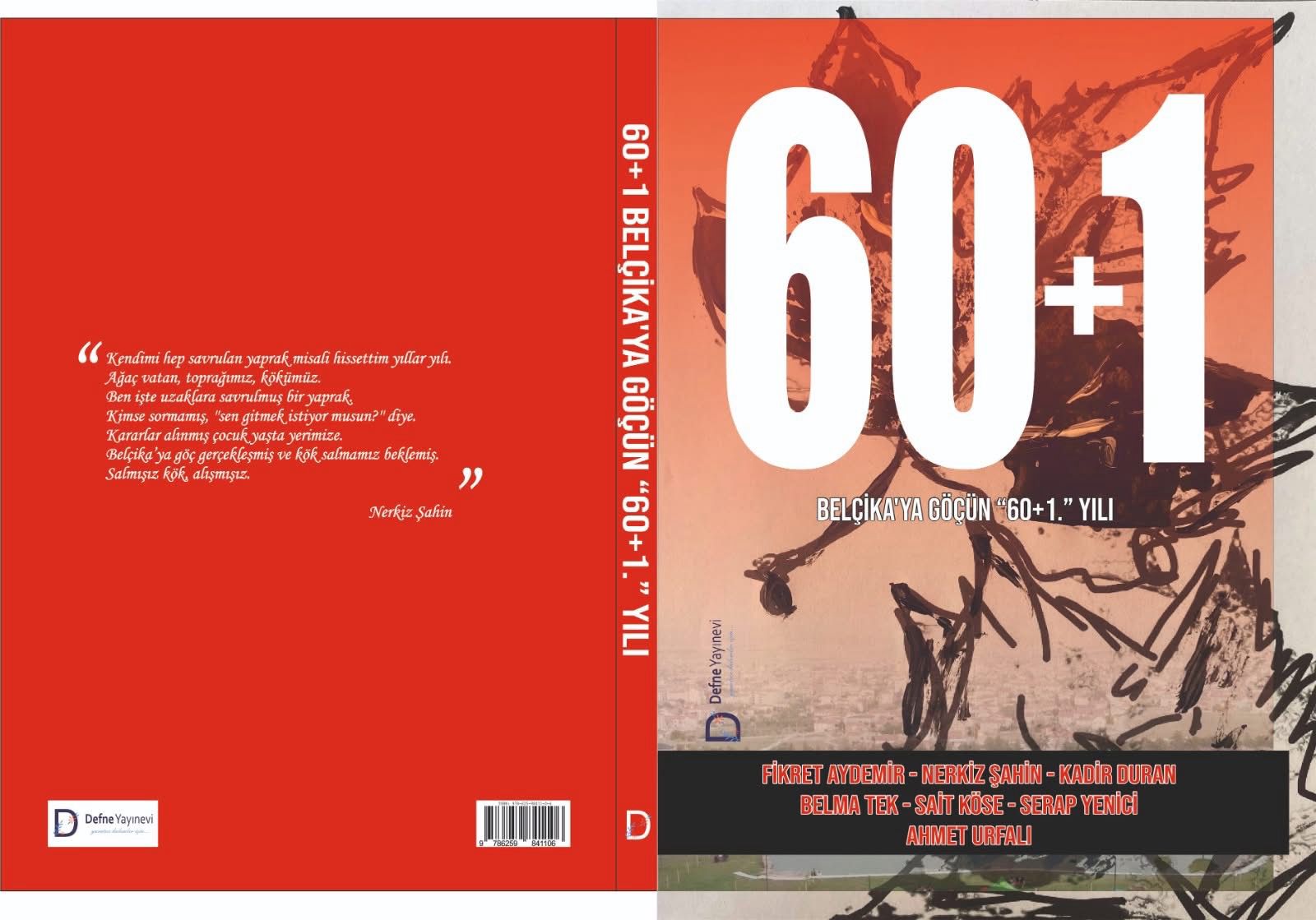

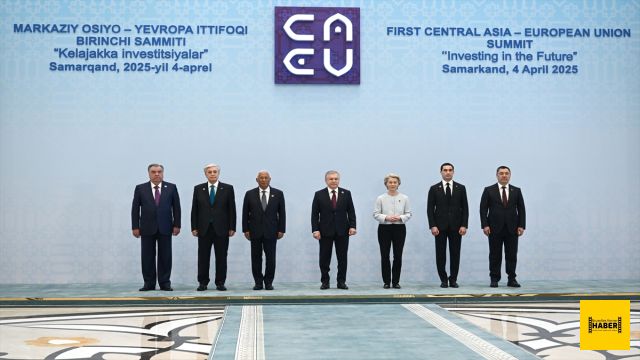






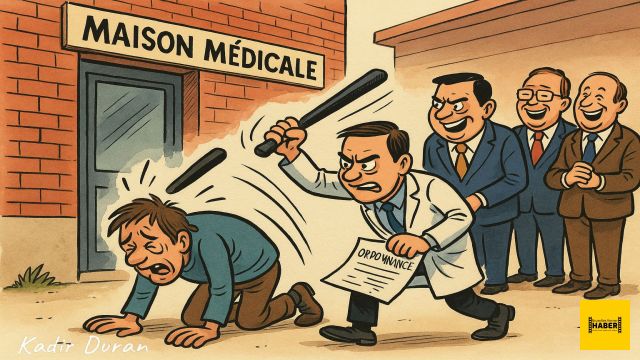
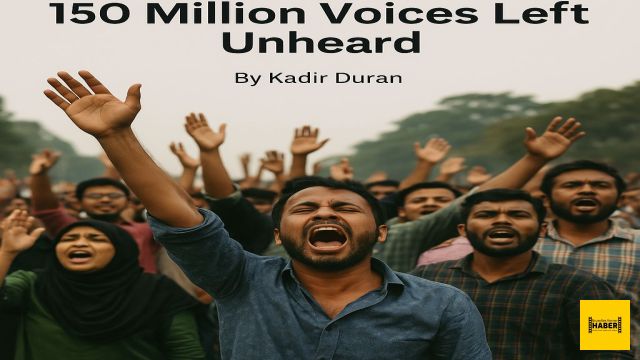
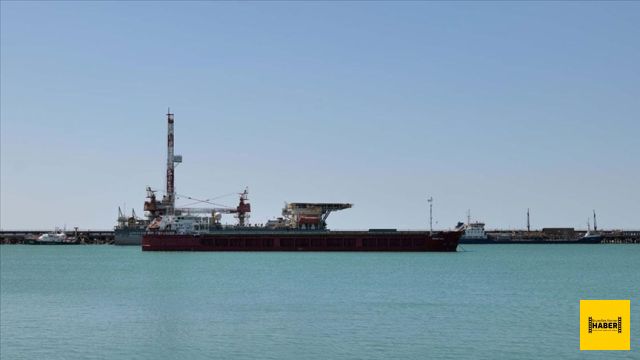
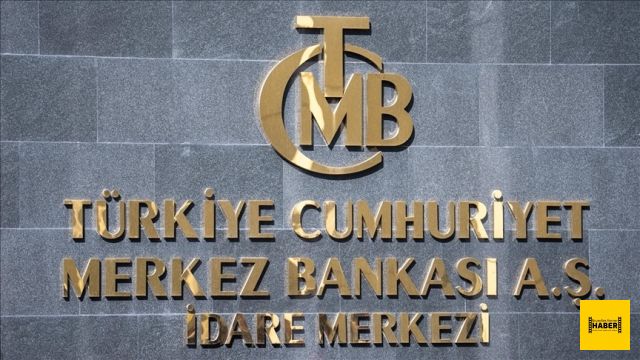
Yorum Yazın